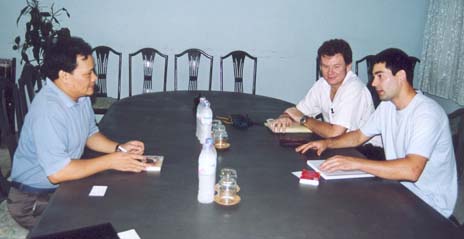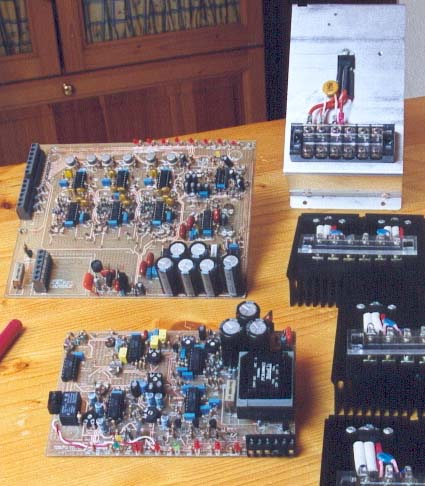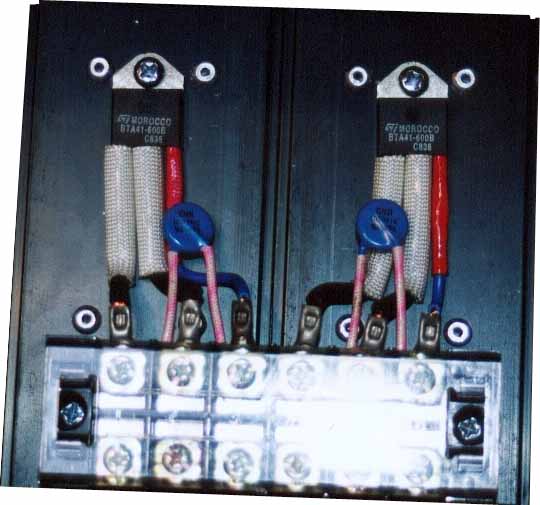
| Mr. Castro's experiences |
On 6 April 2001, mr. Jose Antonio Castro wrote:
Dear Sir,
My name is Jose Castro. I want to install a mycro hydro turbine to power a rural house that is being rebuilt in Galicia-Spain. The power of the site is around 20 kW, and i`ll use a kaplan-type turbine.
I`ve got another 3 friends: Pedro Yera (7 kw), Manuel Garcia (20 kw) and Fernando Pose (10 kw) that are interested also in M.H.
I`m reading your good manual, it`s of great help (congratulations!). I`m a physicist, so I won`t be scared of some thecnicals.
Do you think your system can help us? Is it possible to buy several of them? What would be the price?
Thank you and best wishes,
jose antonio castro pena
I replied that I did not have time to build ELC's/ IGC's. So I advised him to build one himself, or contact other people who had built them and ask whether they could sell a spare one, or build one extra.
On 31 October 2001, mr. Castro contacted me again:
.....
I bought a turbine from Asian Phoenix Resources, a canadian corporation that works with the Hydro Power Center (HPC) of Vietnam. Actually the turbine is already manufactured. It is a kaplan turbine (but with fixed blades) with a 3-phase synchronous generator. The maximum power output is 12 kW. I traveled to Vietnam and met these people. The impressions are very good.The only point was that they didn't have a controller. They were manufacturing one, but it would be too late for me. So I bought from Kumar Fonseka your 3-phase ELC. He is using it on a 100 kW system without problems.
At the HPC they are very interested on your controller. Actually they are testing it on the complete equipment, I mean, with the whole system being tested. But they find some problems. Here you are a report with the problem. I've just received it today.
....
From the report, I could not pinpoint the problem so I could only tell something on how and where to look for it. On 10 November 2001, mr Castro wrote that by then, mr. Fonseka (see mr. Fonseka's projects) knew the problem they had with the ELC and was thinking on it. Mr. Castro sent some interesting pictures, see below. On 14 November, mr. Castro forwarded another report from HPC on technical troubles but again, I could not help much. He mentioned that HPC was building their own controllers and used the work on his ELC as a way to gain experience. He suggested that maybe, they would be interested in building "Humming bird" controllers in large series and asked whether I would like to help them.
In his last email of 7 February 2002, Mr. Castro wrote that:
Photo's from mr. Castro (sent 5 November 2001):
 |
"you can see me (in blue at the right), Glenn Whalan - the director of Asian Phoenix Resources in Vietnam, a very friendly person is in Canada now till the 17th of November. And at the left Mr. Thang, the director of the HPC. If you want I can give you more information about HPC. About Asian Phoenix: www.powerpal.com " |
| The Printed Circuit Board (PCB) of the 3-phase ELC (back-left)
that mr. Castro bought from mr. Fonseka. The 3 black heat
sinks go with this ELC. There are two triacs on each heat
sink, so this ELC has 2 dump loads per phase. The PCB at the front-left is a single-phase IGC that, apparently, he had bought as well. The shiny heat sink belongs to this IGC. On the original photo, 2 more shiny heat sinks were visible so this IGC has 3 dump loads. |
 |
 |
The PCB of the 3-phase ELC: Looks good |
| The triacs for the 3-phase ELC. Those BTA41-600B
types are rated at 40 A up to a case temperature of 70 °C.
So with optimal cooling, capacity for this ELC would be: 3 * 2 * 40 * 230 / 1000 = 55.2 kW (3 phases, 2 dump loads per phase, 40 A current rating and 230 V nominal voltage, divide by 1000 to go from W to kW) So when used with a 12 kW generator, mr. Castro has a very large safety margin on his ELC. The blue components in front of the triacs are "varistors", a kind of two-way zener diodes. They protect the triac against voltage spikes: When voltage over the triac surpasses their treshold level, they conduct a trigger current to the gate of the triac that switches it "on". This makes that most of the spike's energy is dissipated in the dump load and not in the triac or the varistor. |
 |
Sorry, I have no up to date email address of mr. Castro
by
last modified on 24 May 2003